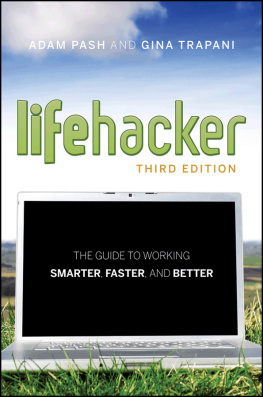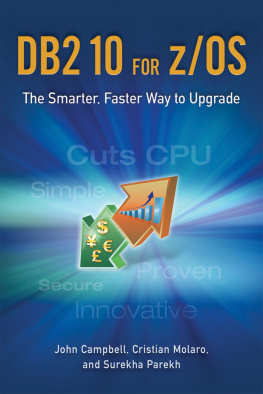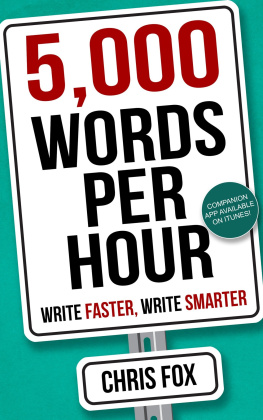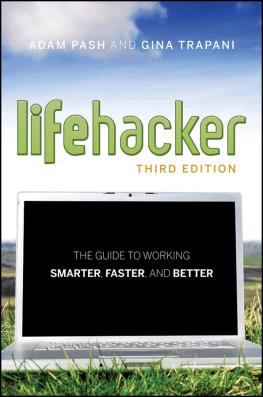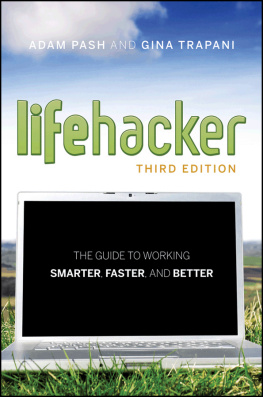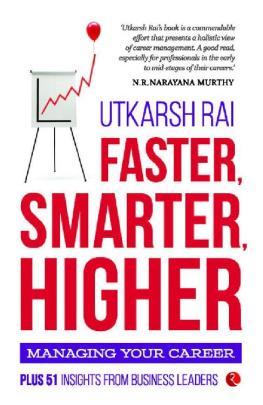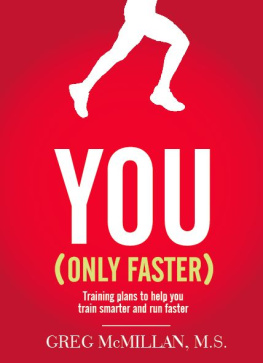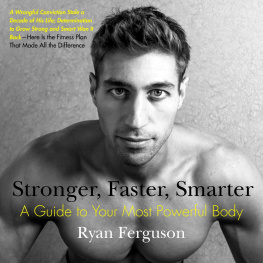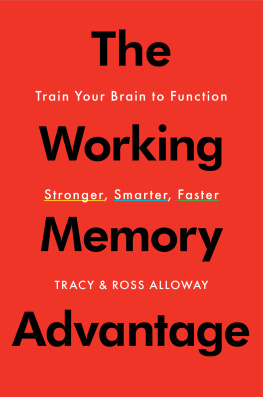Adam Pash - Lifehacker: The Guide to Working Smarter, Faster, and Better, 3rd Edition
Here you can read online Adam Pash - Lifehacker: The Guide to Working Smarter, Faster, and Better, 3rd Edition full text of the book (entire story) in english for free. Download pdf and epub, get meaning, cover and reviews about this ebook. year: 2011, publisher: Wiley, genre: Home and family. Description of the work, (preface) as well as reviews are available. Best literature library LitArk.com created for fans of good reading and offers a wide selection of genres:
Romance novel
Science fiction
Adventure
Detective
Science
History
Home and family
Prose
Art
Politics
Computer
Non-fiction
Religion
Business
Children
Humor
Choose a favorite category and find really read worthwhile books. Enjoy immersion in the world of imagination, feel the emotions of the characters or learn something new for yourself, make an fascinating discovery.
- Book:Lifehacker: The Guide to Working Smarter, Faster, and Better, 3rd Edition
- Author:
- Publisher:Wiley
- Genre:
- Year:2011
- Rating:3 / 5
- Favourites:Add to favourites
- Your mark:
- 60
- 1
- 2
- 3
- 4
- 5
Lifehacker: The Guide to Working Smarter, Faster, and Better, 3rd Edition: summary, description and annotation
We offer to read an annotation, description, summary or preface (depends on what the author of the book "Lifehacker: The Guide to Working Smarter, Faster, and Better, 3rd Edition" wrote himself). If you haven't found the necessary information about the book — write in the comments, we will try to find it.
Adam Pash: author's other books
Who wrote Lifehacker: The Guide to Working Smarter, Faster, and Better, 3rd Edition? Find out the surname, the name of the author of the book and a list of all author's works by series.
Lifehacker: The Guide to Working Smarter, Faster, and Better, 3rd Edition — read online for free the complete book (whole text) full work
Below is the text of the book, divided by pages. System saving the place of the last page read, allows you to conveniently read the book "Lifehacker: The Guide to Working Smarter, Faster, and Better, 3rd Edition" online for free, without having to search again every time where you left off. Put a bookmark, and you can go to the page where you finished reading at any time.
Font size:
Interval:
Bookmark:

Chapter 1
Control Your Email
Do you wish you received less email? Sure you do. Do you want to live without the convenience of electronic mail? Of course you dont. The greatest double-edged sword in productivity technology, email both empowers and overwhelms its users. But the most successful professionals know how to control their email instead of letting it run their workday.
On one hand, email enables anyone with an Internet-connected device to send information great distances at the press of a button. On the other, you have 1,762 unread messages sitting in your inbox, and you dont know when youll have time to get through them all. Ding! Another one just arrived.
Before email became ubiquitous, to send a letter, a person had to commit the information to paper, stuff and address the envelope, affix postage, and drop it in the mailbox. Days or weeks later, the message arrived on the recipients desk. Today, email offers the same type of text-based communication, just faster and easier, complete with a cute little envelope icon. But the same ways you deal with arriving postal mail dont work for electronic mail. Incoming messages are incoming messages. But emails effect on workers is vastly different from paper mail for one fundamental reason: volume. The speed, convenience, and low cost of sending email has increased the number of transmissions to levels that turn the postal service green with envy: Reports estimate 294 billion emails are sent daily. Approximately 80% of that email is spam, but that still leaves roughly 50 billion legitimate emails every day.
This virtually free and instantaneous message transmission is great for the sender but not for the recipient. The cost and inconvenience of sending postal mail acts as a filter: when that envelope appears in the recipients mailbox, she can trust that the message is important enough to the sender to warrant the investment.
Electronic mail, however, shifts that burden. With the volume of electronic mail sent each day, the onus is on the recipient not the sender to sort through the avalanche of received messages. Email overload is such a common malady in the information age that experts estimate it costs companies billions of dollars a year in worker productivity losses.
Some companies and users resort to extreme tactics to combat email overload:
- In 2004, Stanford professor Lawrence Lessig declared email bankruptcy when faced with the thousands of unread messages dating back two years that had accumulated in his inbox. Instead of attempting to open them all a task he said would have been impossible he sent an automated apology to his contacts and asked that they resend their unanswered message only if it were still important. A web search for the term email bankruptcy shows that several others followed suit, publicly announcing their email bankruptcy on their websites.
- Overwhelmed by the effort that writing lengthy responses requires, designer Mike Davidson instituted a personal policy that any message he writes will be fewer than five sentences. Recipients who wonder about the brevity can get more information about the policy, which he includes in his message signature.
- One cellular company designated a weekly email-free day. Employees refrain from sending or checking email (except from customers) every Friday. Workers report that the freedom from the distraction and interruption once a week helps them accomplish a lot more.
Anyone whos spent hours processing a backlog of email can understand why youd employ such tactics. Its so easy to let email take the reins of your workday. All you have to do is leave your email software open while you work. Each time it notifies you that a new message has arrived, stop what youre doing, no matter how important it is or how involved you are, and switch to your inbox. Scan the new message. If its an emergency, deal with it right away. If not, switch back to the task at hand. Try to remember where you were before that message arrived. At the end of the day, wonder how all those read messages accumulated in your inbox, what youre supposed to do about them again, and where the day went.
This is how most people operate. But there is a better way.
You can reduce the amount of time you spend fiddling with email to less than 30 minutes per day. You can empty your inbox and enjoy the feeling that youre completely caught up every workday. You can process your messages in bunches, in between other tasks, when your mind is free and clear. You can hear Thanks for getting back to me so quickly from your boss and co-workers more and more often. You can elicit the response you need in shorter exchanges. You can keep your inbox free of a festering pile of unfulfilled obligations. You can become known as responsive and therefore responsible engaged, and reliable around the office simply by being on top of your email. Soon, wealth, fame, and fortune will ensue.
You can control your email without declaring bankruptcy or refraining from using it just because its a certain day of the week. Small changes and better habits practiced every day can get the constant influx of communication working for you instead of against you. This chapter provides practical strategies for getting your email under control and keeping it there.
NOTE For updates, links, references, and additional tips and tools regarding the hacks in this book, visit http://lifehackerbook.com/ . (Append the chapter number http://lifehackerbook.com/ch1/ , for example to go directly to a specific chapters updates.)
Hack 1: Empty Your Inbox (and Keep It Empty)
Level Easy
Platforms All
Cost Free
When you can empty your inbox on a regular basis, youve reached the ultimate level of email control. Emptying the inbox clears away that pile of unidentified pieces of information, keeps it from stacking up higher every day, and frees your mind to worry about more important work.
Why an Empty Inbox?
Your inbox is a temporary holding pen for unprocessed messages. An unprocessed email is one you havent made a decision about yet. When you get into the habit of deciding what to do with a new message within a day of its arrival, move it out of your inbox.
Some people enjoy keeping their inbox full so that they can glance at a list of most recent messages to see whats going on what they should be working on, what their group is discussing, the latest funny YouTube video thats making the rounds. But just as youd never leave a physical paper inbox full of documents whose only commonality is that theyre incoming , you dont want to leave your email inbox full of messages. An inbox full of read messages does you no favors: You have no way to prioritize whats most important or to access the message contents in their most useful context. For example, a meeting invitation that comes in via email is much more meaningful on your calendar than in your inbox. A website address you want to visit later would do better in your bookmarks than in your email. A project document belongs in its appropriate folder, not in your email program. Everything should have its own place, and the inbox isnt it.
Furthermore, an empty inbox lightens the psychological load of an endless list of messages staring at you every time you check your email. It creates a clear demarcation between whats incoming and whats been resolved or placed into motion.
This hack introduces a simple, three-folder system that keeps your inbox clear and ensures that every message you receive is both findable and actionable without cluttering your inbox.
Set Up the Trusted Trio of Folders
The three folders you need to keep your inbox empty and your messages in process are Archive , Follow Up , and Hold , as shown in .
Font size:
Interval:
Bookmark:
Similar books «Lifehacker: The Guide to Working Smarter, Faster, and Better, 3rd Edition»
Look at similar books to Lifehacker: The Guide to Working Smarter, Faster, and Better, 3rd Edition. We have selected literature similar in name and meaning in the hope of providing readers with more options to find new, interesting, not yet read works.
Discussion, reviews of the book Lifehacker: The Guide to Working Smarter, Faster, and Better, 3rd Edition and just readers' own opinions. Leave your comments, write what you think about the work, its meaning or the main characters. Specify what exactly you liked and what you didn't like, and why you think so.

